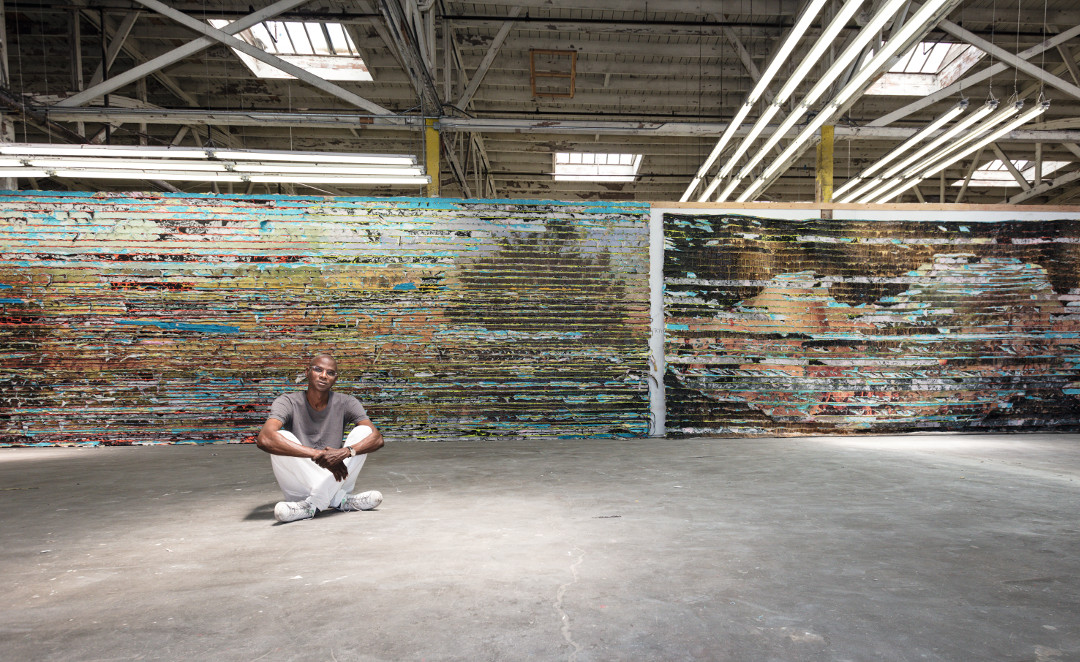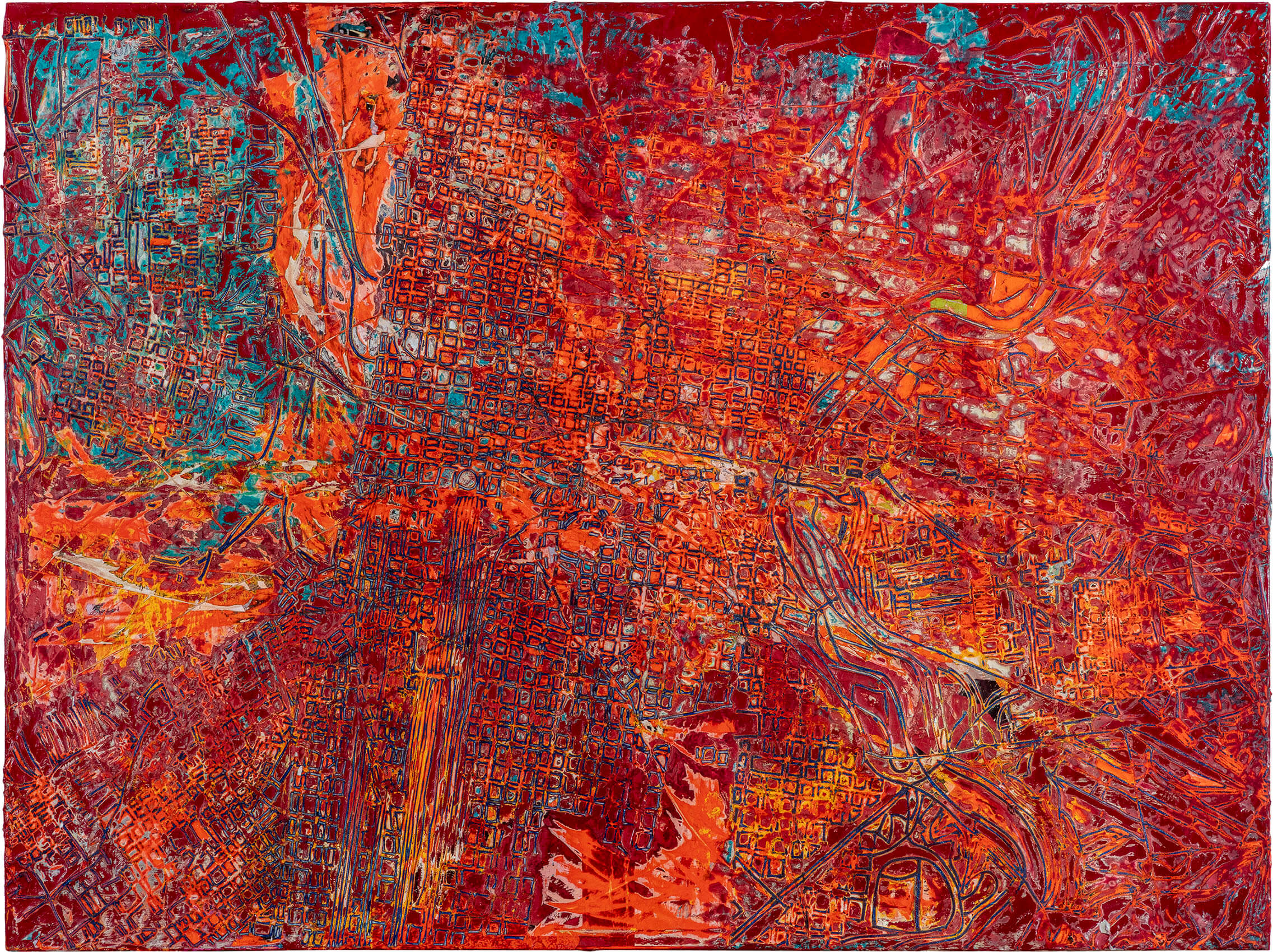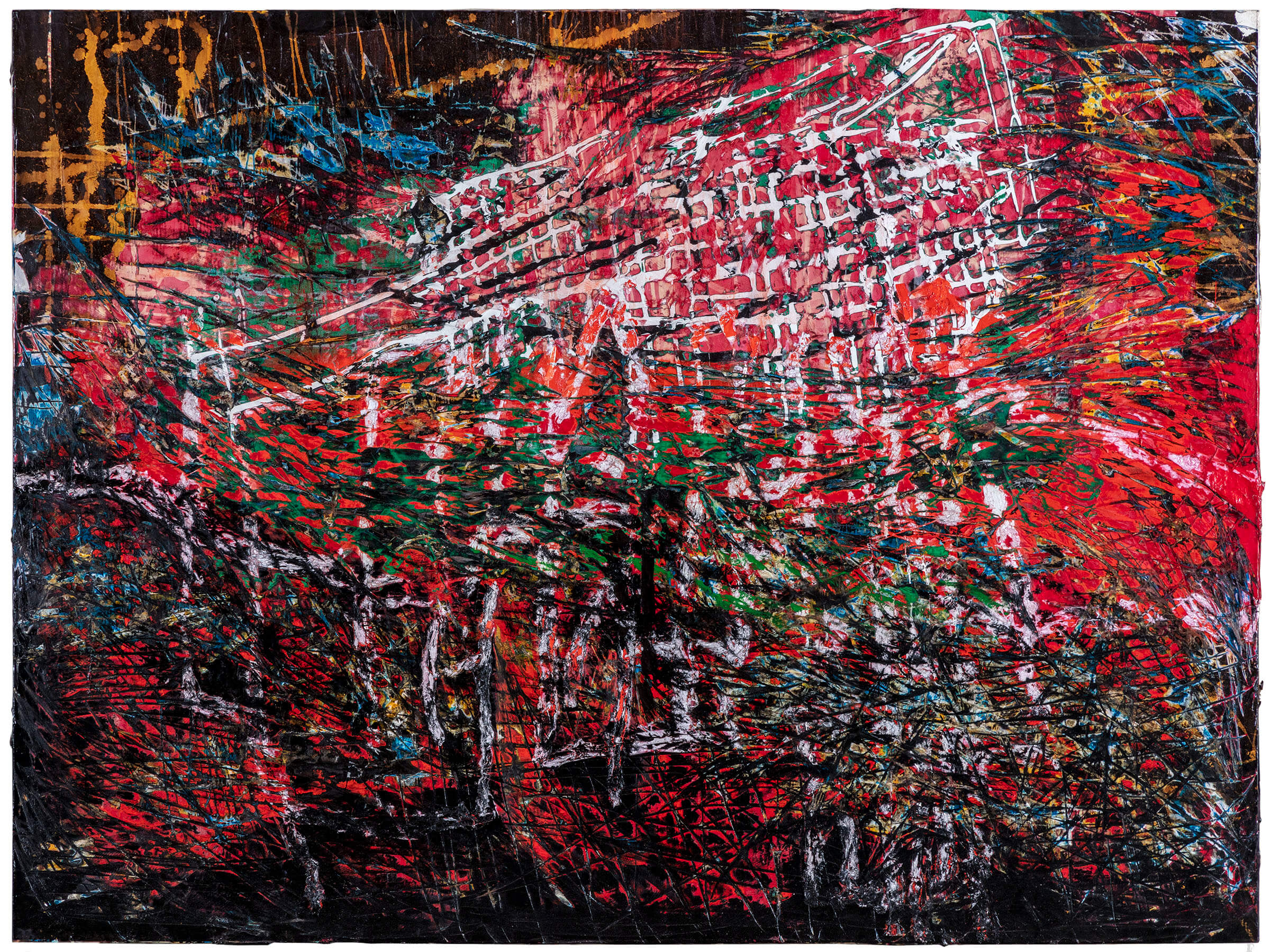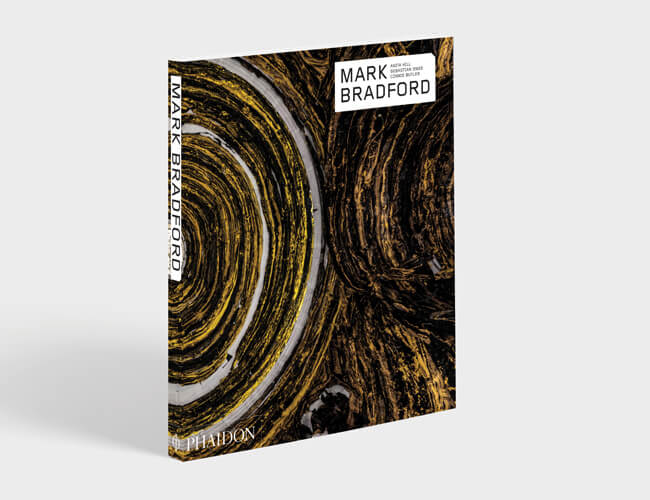
Mark Bradford on the lockdown, LA and how his latest paintings ended up in a grain silo
The Los Angeles artist tells the New York Times that Covid-19 has pushed him into survival mode
How does an artist like Mark Bradford work in lockdown? With some difficulty it seems. “When everything just closed down six months ago, I think I went into survival mode,” the LA painter, collage and video artist tells the New York Times in a profile timed to coincide with a new online exhibition of the work he’s created during this period.
As the paper says, Bradford is no stay-at-home artist; under normal circumstances he eats out every night, works with a sizeable crew of assistants, runs his own non-profit in Los Angeles, and even draws the some of the materials he works with - torn posters and handbills - from the city’s streets, to create semi-abstract works that, to a greater or lesser extent, mirror LA’s street layout.

Nevertheless, the lockdown has pushed Bradford’s work in new and productive ways. He slowed down, applied all the materials to the works himself, and dropped his once frenetic working practices to produce a series of meditative works which, as his gallery Hauser & Wirth puts it, “draw focus to the purpose art serves when the social milieu that brings bodies and voices into contact with it – and that significantly shapes our experience of it – has been dispersed.”
Dubbed the Quarantine Paintings, the works have been installed in a disused grain tower inside Hauser & Wirth LA’s building (which used to serve as a flour mill), and can be viewed online via the gallery’s site.

Though the 58-year-old artist was shaken by the pandemic, he has experienced a couple of things a little bit like it before. In his NY Times profile, he recalls a curfew being imposed on LA following the riots of 1992. Then an assistant at his mother’s beauty shop, he broke the curfew, as evenings were the busiest time for the business. “We didn’t stop, we just put up black paper and kept all the shutters up. The customers came in from the back,” he tells the paper. “For me it was just a risk that I was willing to take.”

The AIDS crisis also foreshadowed Bradford’s 2020 experiences. As a young gay man during the 1980s, he remembers being told to set his affairs in order, in case he were to contract HIV. “‘Get your business in order.’ I’m 20 years old! What business do I have at 20?” he says. “What’s different is that it is not moralized in the same way as AIDS was. There was an ethical or moral idea that these were bad people.”
And while he’s thankful no such moralising surrounds Covid-19, he’s more forthright on picking a side when it comes to Black Lives Matter. “If you choose to turn away from this moment, I feel that’s your choice,” he says. “But one thing you cannot say is, you didn’t know.”
To see Bradford’s new paintings, go here; for a better understanding of this important contemporary artist, order our Mark Bradford book here.